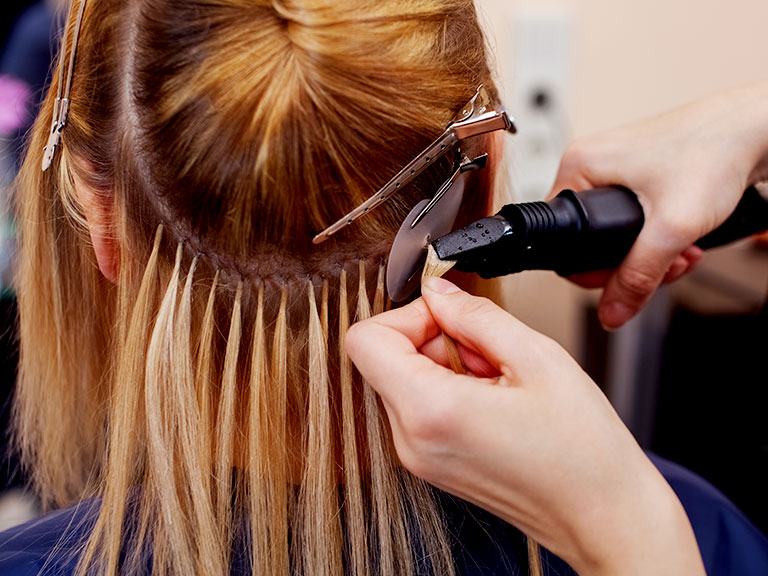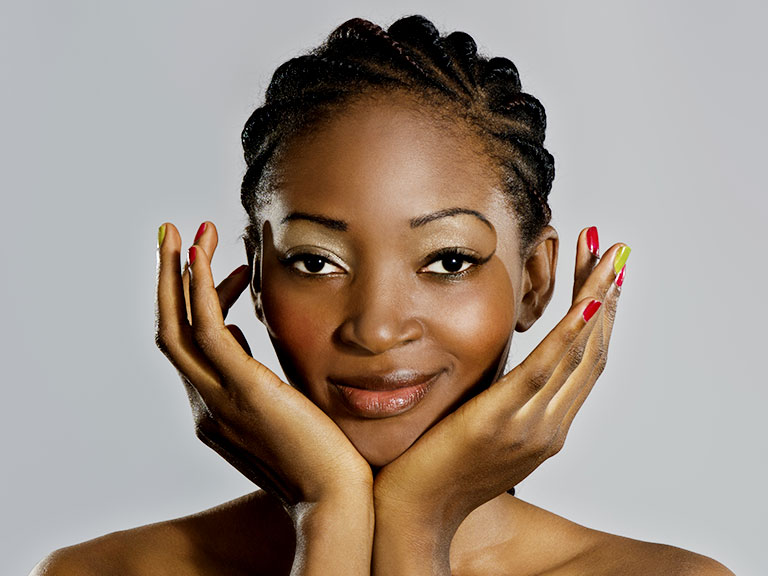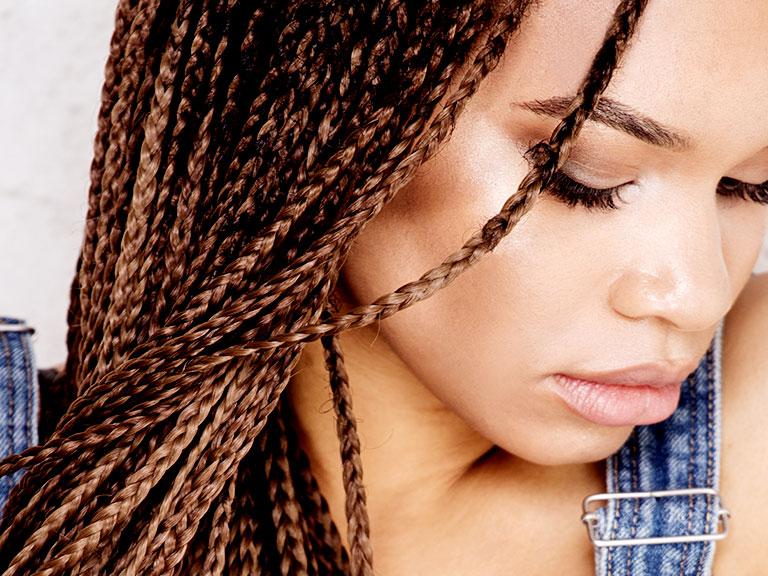If you’re new to the world of weaves and hair extensions, keep in mind that many of the biggest names in Hollywood including musicians and actors often pay top dollar for the best hair extensions.
So… if you look up to celebs for hair inspirations, bear in mind that their hair might not be their own. Weaves and hair extensions are entertainment’s best-kept secret and help transition from short looks to long flowing locks in just a few hours.
While you might have read tabloid stories about high profile cases alleging receding hairlines and hair loss causing some concerns and hesitations over weaves, it’s best to book a consultation before making any assumptions.
The abundance of choices out there can be somewhat overwhelming to wrap your head around. Ranging from glue-ins to clip-ins and threads, there are many options. It’s up to you to do some research before deciding which option is best for your hair type and lifestyle. Keep reading to learn more.

So what’s the Difference between Weaves and Hair Extensions?
Weave is a term that refers to artificial or human hair that is used to change the appearance of someone’s hair by adding more hair. Human hair or artificial hair can be added to sections of natural hair, or a hairpiece can be installed to transform an entire head of hair.
Specifially, weaves involve braiding hair. Once hair is braided, a needle and thread is used to sew hair extensions into the braids. These extensions are sewn from ear to ear and back to front.
Weaves are typically an expensive style and may cost $500 or more. Weave styles can last 6-10 weeks. Special shampoos and conditions are recommended to help maintain the style.
If you want to avoid glue and chemicals, a weave might be a great option for you since it can easily transform the length and thickness of your hair.
However, possible disadvantages include the weave braids being too tight. This could cause headaches, permanent hair loss due to constant stress on the natural hair roots, or soreness of the scalp if done by someone who’s inexperienced.
“Weaves and hair extensions are entertainment’s best-kept secret and help transition from short looks to long flowing locks in just a few hoursâ€.
Hair extensions refers to human or artificial hair that is attached to natural hair with the help of clip-ons, adhesives or other methods to lengthen it. Hair extensions are applied strand by strand to natural hair. It can be a time-consuming process as 100-300+ extensions can be added to make hair look full and natural.
Hair extensions can be quite costly due to the time and skill it takes to apply them seamlessly. There are many different hair extension applications including copper links and various hair bonding methods. It’s always best to book a consultation with an experienced hairstylist who can assess your hair and help you decide which method is best for you.

Are Weaves better than Extensions?
Some of the biggest advantages of weaves is that they can make your hair longer, add thickness and volume. Weaves are also a relatively safe and quick way to add fashion colors to hair without using any hair color or harsh chemicals. Best of all, it’s reversible simply by taking out braids and the weave.
Pros of Weaves:
- Great for creating a variety of unique hairstyles – if you like switching up your look regularly, weaves let you change your style almost instantly without having to cut your hair or grow it out
- A safe option – weaves feel secure since they’re sewn into braided sections of natural hair
- Natural looking – weaves are meant to look natural and work with your existing hair while adding extra volume and length
How Long does a Weave Installation Last?
Sew-in hair extensions are permanent and can last anywhere between 6-8 weeks. However, it’s recommended that the maximum amount of time a weave is kept in is 4 months. Since weaves pull on your roots, this could affect the growth of your natural hair.
Will Hair Weaves Damage your Natural Hair?
If your hair and scalp aren’t in great condition, a weave style could potentially do more harm than good. If you’re not careful, weaves can damage your natural hair.
For example, if weaves are glued in or the braids have been created too tight, they’ll cause breakage. The hair underneath will need to be looked after the same way you would take care of hair without a weave.

How can you Tell if it’s a Weave?
Take a look at how the hair strands fall. Often times fake hair falls in a certain way that is too perfect for real hair. Large curls that never fall flat and a huge amount of volume at the crown of the head are telltale signs of a weave.Â